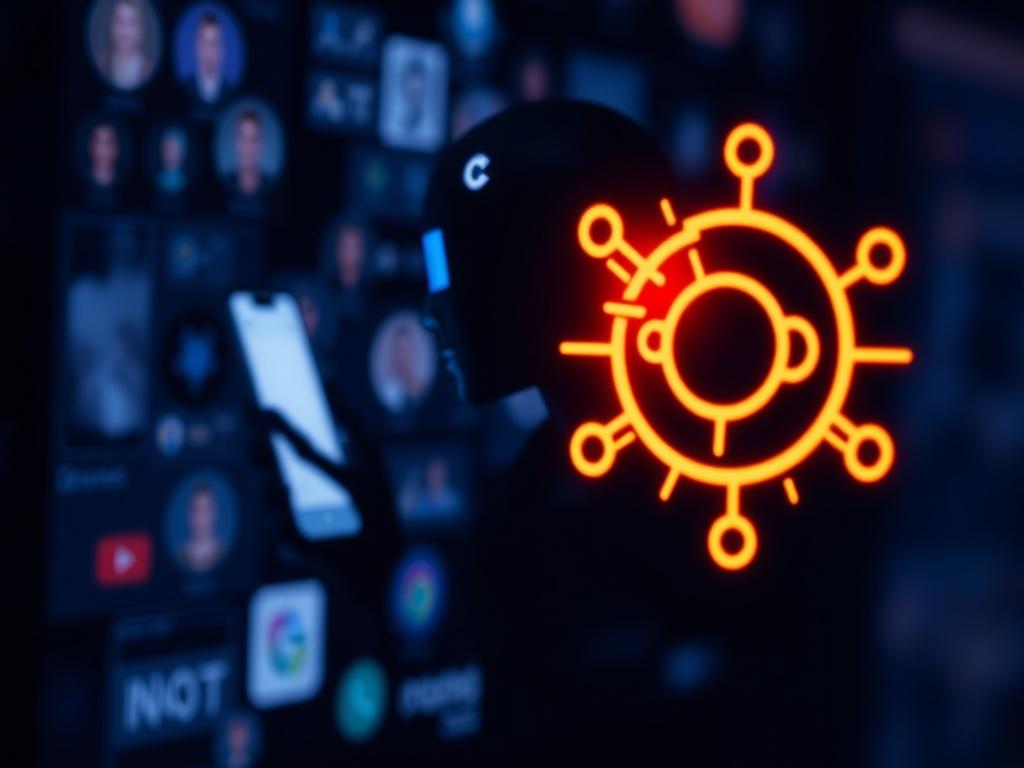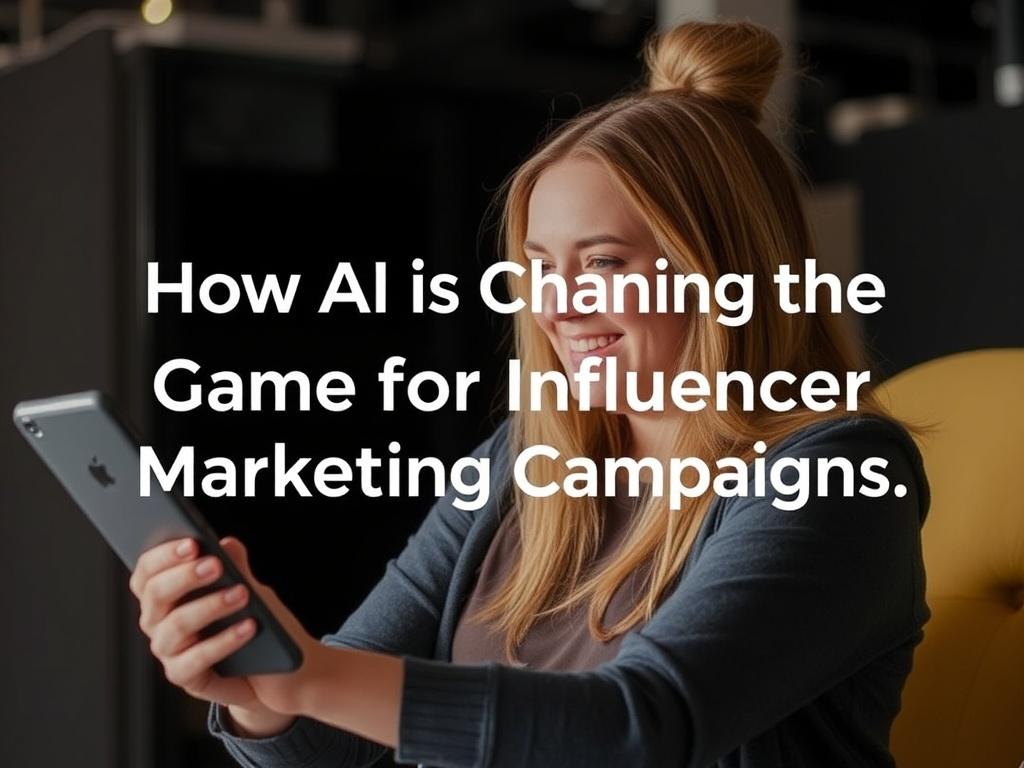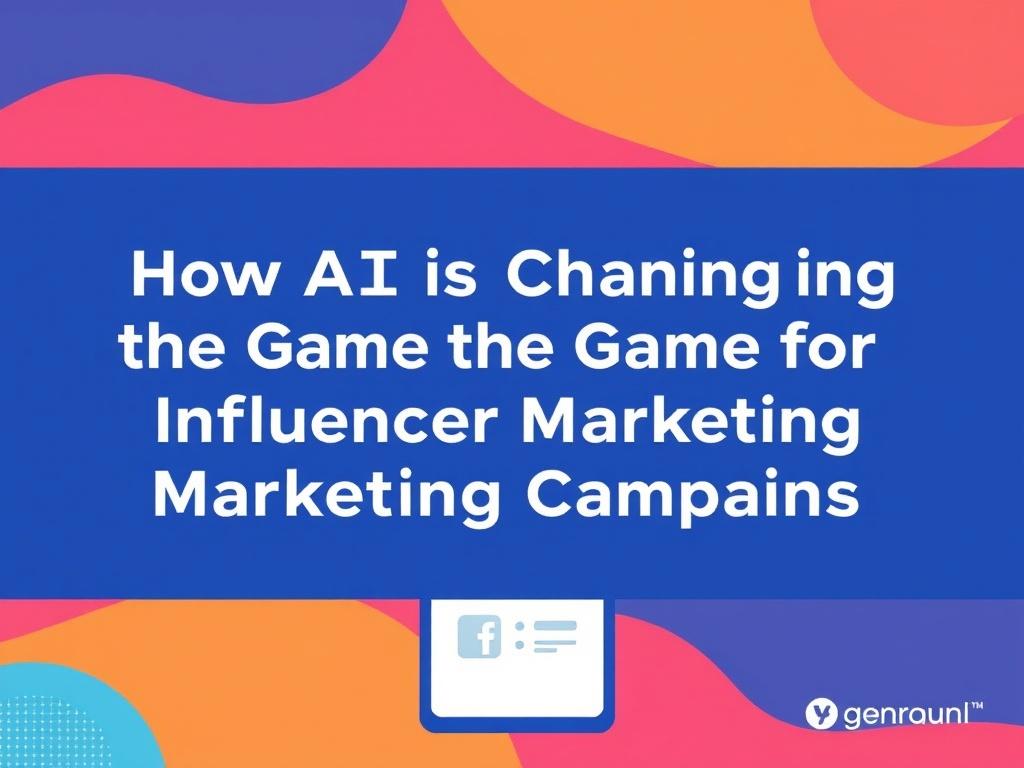Introduction
Influencer marketing used to live in the realm of relationships, intuition, and sometimes lucky guesses. You found an influencer, you liked their vibe, you struck a deal, and you hoped the chemistry translated to sales. Today, artificial intelligence is quietly rewriting that rulebook. The shift isn’t about replacing people — it’s about empowering brands, creators, and agencies to make smarter, faster, and fairer decisions at scale. In this article I’ll walk you through how AI technologies are transforming every step of an influencer marketing campaign: discovery, contracting, creative production, optimization, fraud detection, compliance, and measurement. Expect practical examples, a few lists and tables to organize ideas, and tangible guidance for marketers and creators who want to stay ahead without losing the human touch that makes influencer marketing so powerful.
What Influencer Marketing Looked Like Before AI
Influencer marketing has always blended relationships and storytelling. In earlier days, it was about PR-driven partnerships, celebrity endorsements, and micro-collaborations that relied heavily on manual vetting. Teams spent hours scanning feeds for engagement, eyeballing follower counts, and negotiating deals with a lot of guesswork around audience fit and expected outcomes. Reporting was often retroactive: you ran a campaign, waited weeks, and then tried to stitch together a narrative about what worked and what didn’t.
This system had several limits. First, scalability was tough — doing dozens or hundreds of partnerships required time-consuming manual work. Second, accuracy suffered; follower counts could be inflated, and audience overlap between influencers wasn’t easy to measure. Third, optimization came late or didn’t happen effectively; campaigns often ran their course without the ability to pivot in real time. AI addresses these pain points by turning data into actionable insights, automating repetitive tasks, and enabling faster creative experiments.
Traditional Challenges
- Manual influencer discovery and vetting that’s time-consuming and inconsistent.
- Difficulty measuring true impact and attributing conversions.
- Vulnerability to fraud (bots, fake followers, engagement farms).
- Limited personalization at scale; one-size-fits-all creative often underperforms.
- Slow creative iterations and testing cycles.
The AI Toolkit: What Technologies Are Driving the Change
AI is not a single technology; it’s a toolbox. Different AI capabilities drive different improvements in influencer marketing. Here are the main technologies involved and what they enable.
Machine Learning and Predictive Analytics
Machine learning builds models that identify patterns in historical campaign data. For influencer marketing, ML predicts outcomes such as engagement rates, click-throughs, conversion likelihood, and optimal budget allocation. Instead of betting on a gut feeling, brands can rely on probabilistic forecasts that inform decisions.
Natural Language Processing and Sentiment Analysis
NLP reads text at scale: captions, comments, reviews, and bio descriptions. Sentiment analysis helps brands detect how audiences feel about topics, products, or creators. This enables contextual targeting — matching your brand with creators whose audiences speak positively about relevant themes.
Computer Vision for Visual Content Analysis
Computer vision analyzes images and video frames to categorize content (e.g., fashion, food, travel), assess brand safety (nudity, profanity in visuals), identify product placement, and measure visual quality. This is helpful when you need creators who produce content that visually aligns with your brand standards.
Generative AI for Creative Assistance
Generative AI — including text and image/video generation — speeds up ideation and initial drafts. It can suggest captions, create storyboard concepts, propose editing cuts, or generate on-brand visual assets. While it’s not a replacement for creator authenticity, it is a powerful co-pilot for creative teams.
Graph Algorithms and Network Analysis
Graph algorithms map relationships: how followers overlap, which creators influence which sub-communities, and how information propagates across networks. Understanding these connections helps avoid redundant placements and optimizes reach within target segments.
How AI Enhances Influencer Discovery and Selection

Discovery used to be a scavenger hunt. AI turns it into a targeted search. Rather than scanning countless profiles, you define your campaign goals and constraints, and AI returns a ranked list of candidate creators who are likely to deliver results for your audience.
AI tools evaluate creators along multiple dimensions:
- Authenticity: Patterns in follower growth and engagement suggest whether an audience is organic.
- Audience demographics: Predicted age, gender, and location breakdowns based on follower signals.
- Content fit: NLP and vision models determine whether content themes align with brand values and campaign messaging.
- Historical performance: Past campaign outcomes inform likely future performance.
- Audience overlap: Graph analysis reduces redundant reach and increases campaign efficiency.
Example: Smart Matching vs Manual Search
| Aspect | Manual Approach | AI-Enabled Approach |
|---|---|---|
| Speed | Hours to days per candidate | Minutes for ranked lists |
| Accuracy of Audience Fit | Surface indicators like follower count | Deep analysis of followers, sentiment, and interests |
| Fraud Detection | Basic heuristics or post-discovery audits | Real-time anomaly detection and engagement pattern analysis |
| Scalability | Limited | High — can evaluate thousands of creators |
Content Creation, Optimization, and Creative Testing
AI changes not just who you select but what they produce and how you optimize it. Creators still provide authenticity, but AI helps polish, personalize, and test creative elements faster than ever.
AI-Assisted Ideation and Captioning
Staring at a blank caption box is a common pain point. Generative models can propose caption variants, CTAs, hashtags, and tone adjustments. They can also draft scripts for short-form video that creators can adapt, saving hours of brainstorming.
Automated Video Editing and Visual Enhancement
AI-driven editing tools can auto-trim footage to best moments, correct color, suggest pacing changes, and even produce multiple aspect ratios from the same source clip. This helps creators deliver optimized edits for feed, stories, and Reels/Shorts without repeating production effort.
Multivariate Testing and Dynamic Creative Optimization
AI enables simultaneous testing of multiple creative elements — thumbnail, caption, music, product placement — and then reallocates spend toward the combinations that drive the best results. Instead of a single creative running for the campaign duration, AI keeps experimenting and iterating.
Content Guidelines and Brand Safety
Brands can provide creative guardrails; AI scans drafts and flags potential issues (inappropriate language, unauthorized logos, or on-camera usage that violates brand policy). This shortens the review loop while protecting brand reputation.
Personalization and Audience Targeting at Scale
Personalization used to mean segmenting by a few basic demographics. Now, AI helps craft messages tailored to micro-segments, even to individuals in some cases, while remaining scalable.
- Behavioral micro-segmentation: AI clusters audiences by behavior — interests, purchase likelihood, content consumption patterns — not just age or location.
- Dynamic messaging: Influencer content can have modular elements that change depending on the viewer’s predicted preference (e.g., version A for outdoorsy viewers, version B for city-living viewers).
- Adaptive influencer pairings: Based on real-time performance, AI might suggest pairing an influencer with a different co-creator or shifting budget to creators resonating with high-value segments.
Performance Measurement, Attribution, and ROAS
Measuring influence is tricky. AI brings new rigor to attribution and performance measurement through advanced analytics, causal inference, and incremental lift testing.
From Last-Click to Incremental Lift
Rather than relying on last-click attribution, AI models can estimate incremental conversions attributable to a campaign using techniques like uplift modeling or controlled experiments (geo-splits, holdouts). This gives a clearer picture of ROI.
Real-Time Dashboards and Alerts
Campaign dashboards powered by AI highlight anomalies, suggest optimizations (increase spend on Creator A’s stories, pause Creator B’s static posts), and forecast end-of-campaign results so teams can take action mid-flight.
Cross-Channel Attribution
AI integrates signals from multiple channels — organic social, paid ads, email, web analytics — to create a unified view of the customer journey. This helps marketers see where influencer touchpoints fit into larger conversion paths.
Fraud Detection, Safety, and Compliance
One of the most immediate benefits of AI is its ability to detect fraud and protect brand safety at scale.
Detecting Fake Followers and Inauthentic Engagement
AI algorithms analyze follower growth patterns, engagement timing, comment authenticity, and network graphs to flag suspicious influencers. These systems don’t just look at follower counts but at how they were gained and how they interact with content.
Brand Safety and Content Moderation
Vision and NLP models screen influencer content for potentially harmful or off-brand elements before posts go live. This reduces the risk of expensive misalignments and PR issues.
Regulatory Compliance
AI helps enforce disclosure rules by scanning content for required tags and disclosures (e.g., #ad equivalents), and by tracking whether creators include the correct language and formats needed for compliance in different regions.
Virtual Influencers and Synthetic Creators
AI has given rise to digital-native personalities: virtual influencers. These are fully synthetic creators with scripted personas and curated narratives. They can be deployed strategically for brand-aligned storytelling, 24/7 availability, and fully controlled messaging.
- Pros: Total creative control, predictable availability, no scandal risk inherent to human behavior, and high scalability.
- Cons: Authenticity gaps in some audiences, potential backlash if used deceptively, and technical/ethical considerations around deepfakes and representation.
Digital creators can also be hybrid: a human influencer augmented by AI-generated visuals or AI-scripted story arcs, blending authenticity with technological precision.
Ethical, Privacy, and Transparency Concerns
AI’s benefits come with responsibilities. Brands and platforms must navigate privacy, consent, bias, and transparency.
Data Privacy and Consent
Micro-personalization relies on data. Marketers must ensure data sourcing respects user consent and privacy laws like GDPR, CCPA, and emerging regulations. Using audience insights ethically builds trust and avoids regulatory penalties.
Bias and Fairness
AI systems can perpetuate bias present in training data — for example, favoring creators from certain regions or demographics. Regular auditing of models, diverse training data, and human oversight help mitigate these risks.
Transparency with Audiences
Viewers value honest relationships. Brands should be transparent about using AI in content generation, especially when virtual influencers or AI-generated clips are used. Clear disclosures maintain trust and reduce backlash.
Tools and Platforms: The AI Landscape for Influencer Marketing
There’s a broad ecosystem of tools that bring AI capabilities to influencer marketing. Below is a sample table showing types of tools and what they help with. (This is illustrative; tool capabilities evolve quickly.)
| Tool Category | Typical Capabilities | Examples |
|---|---|---|
| Influencer Discovery & Management | Audience analysis, discovery, campaign management | Creator platforms and CRMs |
| Fraud Detection & Analytics | Fake follower detection, engagement authenticity | Analytics and verification services |
| Creative & Content Tools | Caption generation, automated editing, creative testing | Generative AI tools, video editors |
| Social Listening & Sentiment | Trend detection, reputation monitoring | Social intelligence platforms |
| Attribution & Incrementality | Uplift modeling, cross-channel attribution | Advanced analytics suites |
How to Choose a Tool
- Start with clear objectives: discovery, fraud detection, creative optimization, or measurement — pick tools aligned to your highest pain point.
- Look for interoperability: tools should integrate with your analytics stack, ad platforms, and CRM.
- Evaluate transparency: vendors who explain how their models work and provide auditable outputs are preferable.
- Run pilots: test tools on small campaigns to validate claims before full deployment.
For Brands: How to Build AI-Driven Influencer Campaigns
If you’re a brand leader or marketer wondering where to start, here’s a pragmatic roadmap.
Step-by-Step Roadmap
- Define objectives and KPIs: awareness, engagement, conversions, or retention will influence data needs and model choices.
- Audit data and tech stack: ensure you have reliable analytics, tagged links, and a way to collect post-level performance data.
- Prioritize one use case: e.g., influencer discovery or fraud detection. Don’t try to implement everything at once.
- Select vendors and run a pilot: pick tools that let you evaluate efficacy within a single campaign or region.
- Measure incrementality: use holdouts or uplift testing to understand true impact and avoid misattributing conversions.
- Scale with governance: create AI usage policies covering data privacy, model auditing, and disclosure practices.
Checklist for Campaign Readiness
- Campaign goals and measurement plan are documented.
- Tracking infrastructure (UTMs, pixels) is in place.
- Creator onboarding processes include brand safety checks and disclosure requirements.
- Contracts include performance metrics and creative rights for iterative testing.
- Legal and compliance teams have reviewed AI-generated content and virtual influencer use.
- Plan for human oversight of all AI suggestions and decisions.
For Influencers: How to Work with AI
AI affects creators positively too. Influencers who learn to use AI can boost productivity and become more attractive partners.
- Use AI tools for caption drafts, hashtag suggestions, and initial editing to speed up production.
- Leverage analytics tools to demonstrate your audience quality — don’t just show follower counts.
- Be transparent about any AI-generated elements in your content and about how you collect audience insights.
- Use audience segmentation insights to pitch personalized campaign ideas to brands.
Case Studies and Real-World Examples
Here are several anonymized scenarios that illustrate how AI reshapes campaigns.
Case Study 1: Scaling Micro-Influencer Programs
A DTC apparel brand needed to test new product lines across diverse geographies. Using AI-based discovery, they identified 200 micro-influencers across targeted niches, prioritized by predicted conversion probability and low follower overlap. AI tools automated outreach and scheduling; creative variants were generated and tested, and spend was dynamically reallocated to top performers. The result: a 30% higher ROAS than previous micro-influencer pilots and a 60% reduction in discovery time.
Case Study 2: Protecting Brand Safety During a Product Launch
A skincare brand preparing for a global launch used computer vision tools to automatically flag influencer content that might show unauthorized product claims or problematic imagery. The brand set up real-time scans and received alerts that allowed a quick creative rework before content went live. This prevented potential regulatory issues and preserved launch momentum.
Case Study 3: Measuring Incremental Lift
An e-commerce platform wanted to know whether influencer mentions drove real purchases. They worked with an analytics partner to set up holdout regions and applied uplift modeling. The analysis showed that certain creator categories drove significant incremental sales, while others mostly amplified existing demand. This insight led to refined budget allocation and better briefs for creators who drove the real lift.
Skills Marketers and Creators Need in an AI-Driven World
AI changes the required skill set rather than removing the need for judgment, taste, and strategy.
For Marketers
- Data literacy: understanding model outputs, confidence intervals, and basic metrics.
- Experimentation mindset: designing tests and interpreting results rather than trusting a single metric.
- Ethics and governance: ability to assess privacy and bias concerns.
- Vendor management: integrating multiple tools and holding vendors accountable for claims.
For Creators
- Tool fluency: using editing and generative tools effectively.
- Analytic storytelling: packaging your audience insights into compelling pitches for brands.
- Transparency and authenticity: balancing AI augmentation with trustworthy personal voice.
What Comes Next: Future Trends to Watch
AI in influencer marketing will continue to evolve, and a few emergent trends deserve attention.
Hyper-Personalized Creative at the Individual Level
As models get better at predicting individual preferences, expect campaigns that adapt messaging at the personal level, while still respecting privacy constraints.
On-Device and Privacy-Preserving AI
Technologies like federated learning allow models to learn from user behavior without centralizing raw personal data, enabling personalization that better protects privacy.
Deeper Integration Between Organic and Paid
AI will blur the lines between organic influencer content and paid amplification. Campaigns will be co-optimized across organic placements and paid channels to maximize impact.
Ethical Standards and Regulation
Expect more formal rules around AI-generated content, influencer disclosures, and the use of synthetic creators. Brands that adopt clearer, proactive policies will have a reputational advantage.
Creative Collaboration Between Humans and Machines
The most effective campaigns will be those where creators use AI as an assistant — freeing them to focus on storytelling and audience relationships while machines handle repetitive or data-heavy tasks.
Risks and How to Mitigate Them
AI is powerful, but not without pitfalls. Here are common risks and practical mitigations.
- Over-reliance on models: Always include human review and set thresholds where humans must sign off.
- Data bias: Audit training datasets and use diverse data sources to reduce skewed recommendations.
- Privacy missteps: Use consented data and privacy-preserving approaches; involve legal early.
- Loss of authenticity: Use AI-generated inputs sparingly and transparently to preserve creator voice.
- Regulatory non-compliance: Keep compliance teams close and maintain audit trails for AI decisions.
Practical Playbook: A Sample AI-Driven Campaign Flow
Below is a simplified playbook for running an AI-augmented influencer campaign.
- Phase 1 — Strategy: Define goals, KPIs, and target audiences. Choose one or two AI tools for discovery and fraud detection.
- Phase 2 — Discovery: Use AI to generate a ranked shortlist of creators with predicted performance scores and audience breakdowns.
- Phase 3 — Creative Briefing: Provide creators with AI-assisted storyboards and caption variants. Include mandatory disclosures and brand guidelines.
- Phase 4 — Execution & Optimization: Launch with multiple creative variants. Use AI to monitor performance and reallocate budget weekly or even daily.
- Phase 5 — Measurement & Learnings: Run holdouts or uplift tests to estimate incremental impact. Feed learnings back into models and creative libraries.
Key Metrics to Track
AI should help you track the metrics that matter most for your goals. Here are common KPIs and why they matter.
- Engagement Rate (likes, comments, shares) — quick signal of content resonance.
- View-Through Rate and Completion Rate — especially important for video campaigns.
- Click-Through Rate and Landing Page Behavior — measures intent to learn more or purchase.
- Conversion Rate and Cost Per Acquisition — direct ROI indicators.
- Incremental Lift — measures true attributable impact beyond baseline.
- Audience Quality Score — composite metric for authenticity and fit, often calculated by AI tools.
Final Thoughts

AI is a force multiplier for influencer marketing. It does the heavy lifting — processing data, predicting outcomes, detecting fraud, and optimizing creatives — so humans can focus on strategy, relationships, and storytelling. AI will not, and should not, replace the human connection at the heart of influencer marketing. Instead, it should enable campaigns that are more targeted, measurable, and creative while preserving the authenticity that makes influencer content so compelling. The brands and creators who succeed will be those that blend machine precision with human artistry, govern AI responsibly, and keep experimentation at the core of their approach.
Conclusion

AI is transforming influencer marketing from a largely intuition-driven practice into a data-informed discipline that can scale personalization, reduce fraud, and speed up creative testing, but success depends on combining these tools with ethical guidelines, human oversight, and a commitment to authenticity; marketers and creators who embrace AI thoughtfully will unlock efficiencies and insights while preserving the human stories that make influencer marketing effective.
